Major Accomplishments Achieved Within the Framework of the Machinery
The United Nations Disarmament Machinery plays an invaluable role in the negotiation and adoption of major multilateral arms control, non-proliferation and disarmament treaties.
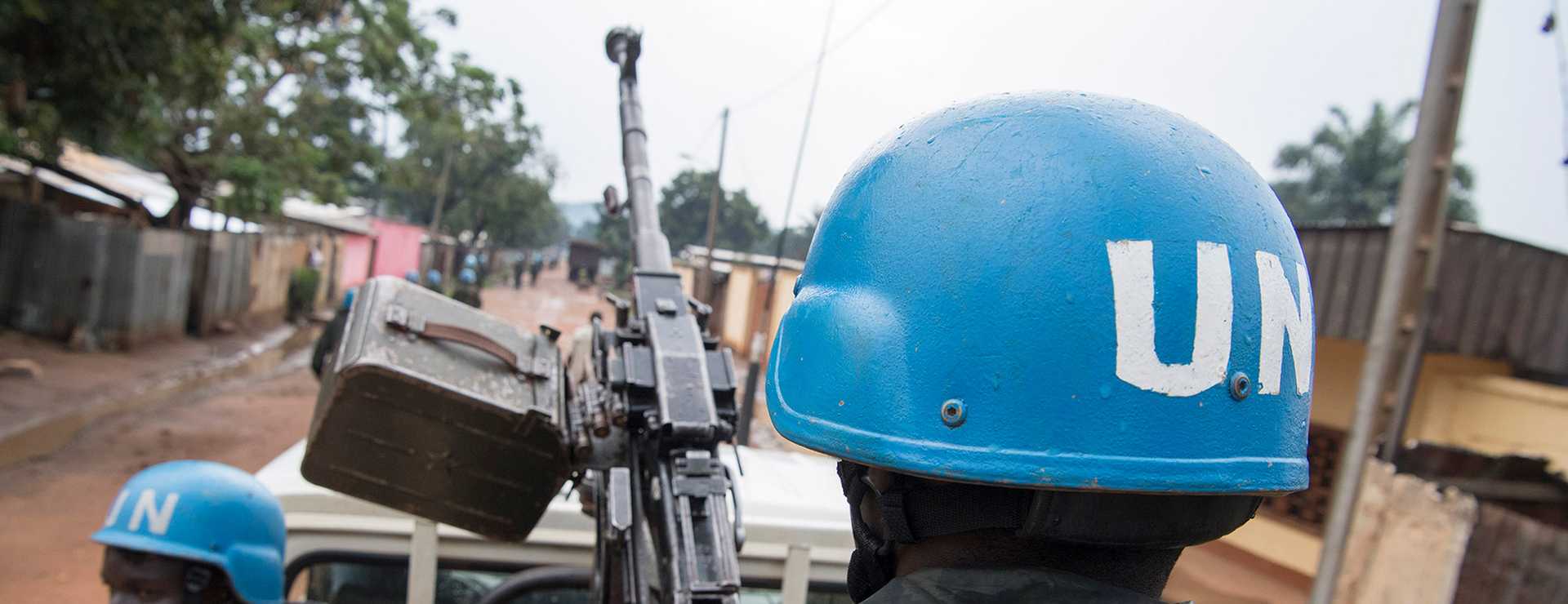
In this chapter you will learn more about some of the major accomplishments of the Disarmament Machinery.
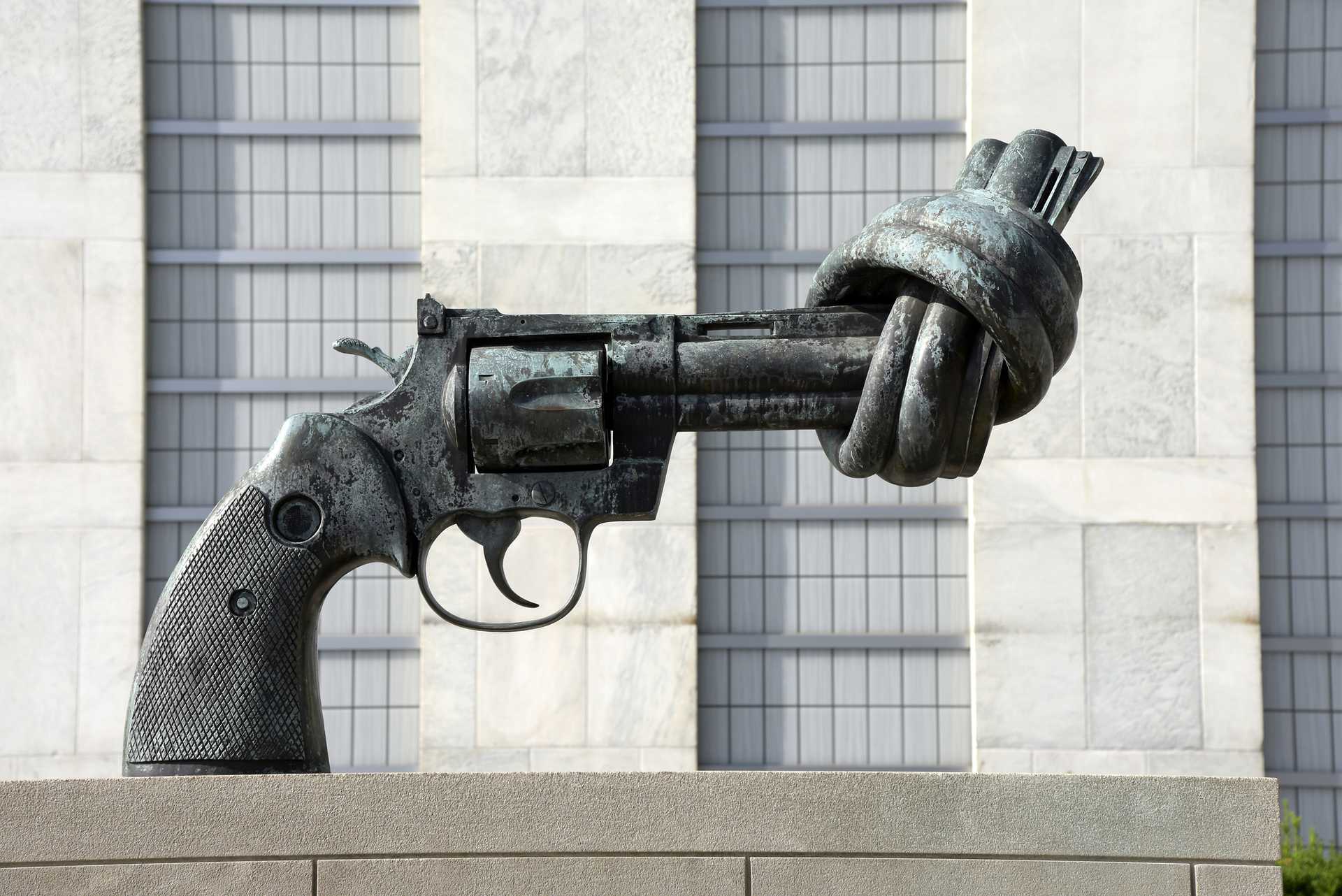
Major Accomplishments Achieved Within the Framework of the Machinery – Weapons of Mass Destruction
- NPT - The Nuclear Non-Proliferation Treaty
NPT The Nuclear Non-Proliferation Treaty
Negotiated in: the 18-Nation Disarmament Commission (later known as the CD) Commended by the UNGA with Res 2373
Opened for signature: 1968 In force: 1970 191 Members
More info: LU 05: Nuclear Weapons II www.un.org/disarmament/wmd/nuclear/npt
- BTWC - The Biological Weapons Convention
BTWC The Biological Weapons Convention
Negotiated in: the Conference of the Committee on Disarmament (later known as the CD) Commended by the UNGA with Res 2826
Opened for signature: 1972 In force: 1975 183 Members
More info: LU 03: Biological Weapons www.un.org/disarmament/biological-weapons
- CWC - The Chemical Weapons Convention
CWC The Chemical Weapons Convention
Negotiated in: the Conference on Disarmament (CD) Commended by the UNGA with Res 47/39
Opened for signature: 1993 In force: 1997 193 Members
More info: LU 02: Chemical Weapons www.un.org/disarmament/wmd/chemical
- CTBT - The Comprehensive Test Ban Non-Proliferation Treaty
CTBT The Comprehensive Test Ban Non-Proliferation Treaty
Upgrade to the Limited Test Ban Treaty (1963) Negotiated in: the Conference on Disarmament (CD) Adopted by the UNGA with Res 50/245
Opened for signature: 1996 Not yet in force 184 Members
More info: LU 04: Nuclear Weapons I www.un.org/disarmament/wmd/nuclear/ctbt/
- NWFZ - Nuclear Weapons Free Zones
NWFZ Nuclear Weapons Free Zones
Definition, scope and obligations for States firstly negotiated in the Conference of the Committee on Disarmament (later the CD), and then adopted by the UNGA with Res 3472 - 1975
Resulted in the adoption of numerous NWFZ treaties
More info: LU 06: WMD-Free Zones www.un.org/disarmament/wmd/nuclear/nwfz/
- TPNW - The Treaty on the Prohibition of Nuclear Weapons
TPNW The Treaty on the Prohibition of Nuclear Weapons
Negotiated in 2017 in a UN Conference convened by the UNGA through Res 71/258 Adopted in 2017 by a vote of 123 States in favour
Opened for signature: 2017 It officially entered into force on January 22, 2021
More info: LU 09: Humanitarian Arms Control I, Chapter 5 www.un.org/disarmament/wmd/nuclear/tpnw
Major Accomplishments Achieved Within the Framework of the Machinery – Conventional Weapons and Other Issues
- CCW - The Convention on Certain Conventional Weapons
CCW The Convention on Certain Conventional Weapons
Negotiated in 1980 in a UN Conference convened by the UNGA through Res 32/152 and Res 33/70.
Adopted in 1980 by a vote of 50 States in favour
Opened for signature: 1981 In force: 1983, Amended in 2001 125 Members
More info: LU 09: Humanitarian Arms Control I, Chapter 1 https://www.un.org/disarmament/the-convention-on-certain-conventional-weapons
- APM - The Anti-Personnel Mine Ban Convention
APM (Ottawa Treaty) The Anti-Personnel Mine Ban Convention
Started in the CCW, negotiations were carried out through the Ottawa Process Treaty welcomed by the UNGA with Res 52/38
Opened for signature: 1997 In force: 1999 164 Members
More info: LU 09: Humanitarian Arms Control I, Chapter 2 www.apminebanconvention.org
- PAROS - Prevention of an Arms Race in Outer Space - UN Resolution
PAROS Prevention of an Arms Race in Outer Space - UN Resolution
Reaffirming the principles of the 1967 Outer Space Treaty and advocating for a ban on the weaponization of space, Res 52/37 was adopted by the UNGA in 1997
Currently discussed in the Conference on Disarmament
More info: LU 08: Missiles and Space, Chapter 3 www.un.org/disarmament/topics/outerspace
- PoA - Programme of Action on Small Arms and Light Weapons
PoA Programme of Action on Small Arms and Light Weapons
Negotiated in 2001 in a UN Conference convened by the UNGA through Res 54/54 part V
Adopted by all UN Member States, which in 2005 also adopted the International Tracing Instrument (ITI)
More info: LU 10: Humanitarian Arms Control II http://unrcpd.org/conventional-weapons/poa/
- CCM - The Convention on Cluster Munitions
CCM The Convention on Cluster Munitions
Started in the CCW, negotiations were carried out through the Oslo Process UNGA urged all States to join with Res 70/54
Opened for signature: 2008 In force: 2010 108 Members
More info: LU 09: Humanitarian Arms Control I https://www.un.org/disarmament/ccm/
- ATT - Arms Trade Treaty
ATT The Arms Trade Treaty
Negotiated in a UN Conference convened by the UNGA through Res 64/48
Adopted by the UNGA with Res 67/234B
Opened for signature: 2013 In force: 2014 130 Members
More info: LU 10: Humanitarian Arms Control II www.un.org/disarmament/convarms/att
The Role of Civil Society
Civil society plays a fundamental role in the advancement of disarmament goals and in assisting the United Nations Disarmament Machinery achieve its major accomplishments in the field.
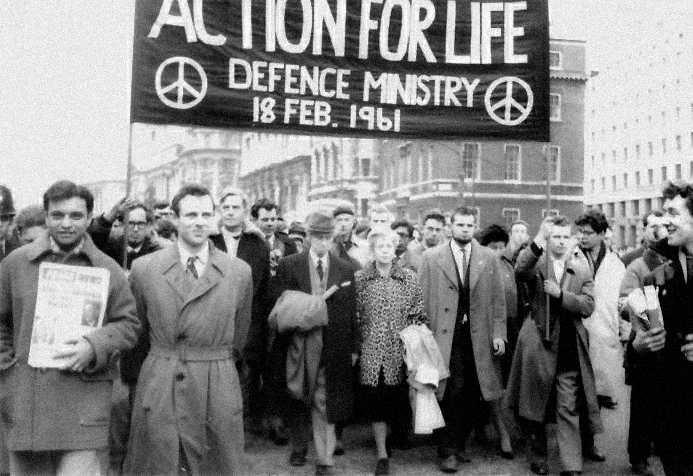
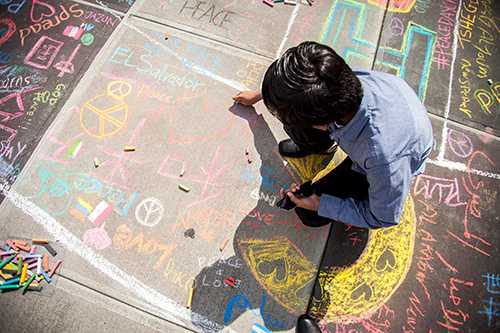
- marches
- studies and publications
- conferences
- side events at international conferences
… are only some of the ways in which civil society is able to generate incredible impact often resulting in the adoption of well-informed national policies and ground-breaking international treaties.
The Role of Civil Society: Example TPNW
The Treaty on the Prohibition of Nuclear Weapons (TPNW) is one of the latest examples and results of civil society’s efforts in promoting disarmament.
Adopted: 7 July 2017 Opened for signature: 20 September 2017 Entered into force: 22 January 2021
The treaty is the first legally binding international agreement that outlaws nuclear weapons, prohibiting their use, possessing, development, production, testing, stockpiling and transferring, among other things.
The ultimate goal of the TPNW is the total elimination of nuclear weapons.
The treaty was adopted following decades of international advocacy campaigns organized by civil society.
One of the major architects of the Treaty was The International Campaign to Abolish Nuclear Weapons (ICAN), a coalition of non-governmental organizations, which in 2017 was awarded the Nobel Peace Price in recognition of its efforts to draw attention to the catastrophic humanitarian consequences of the potential use of nuclear weapons.
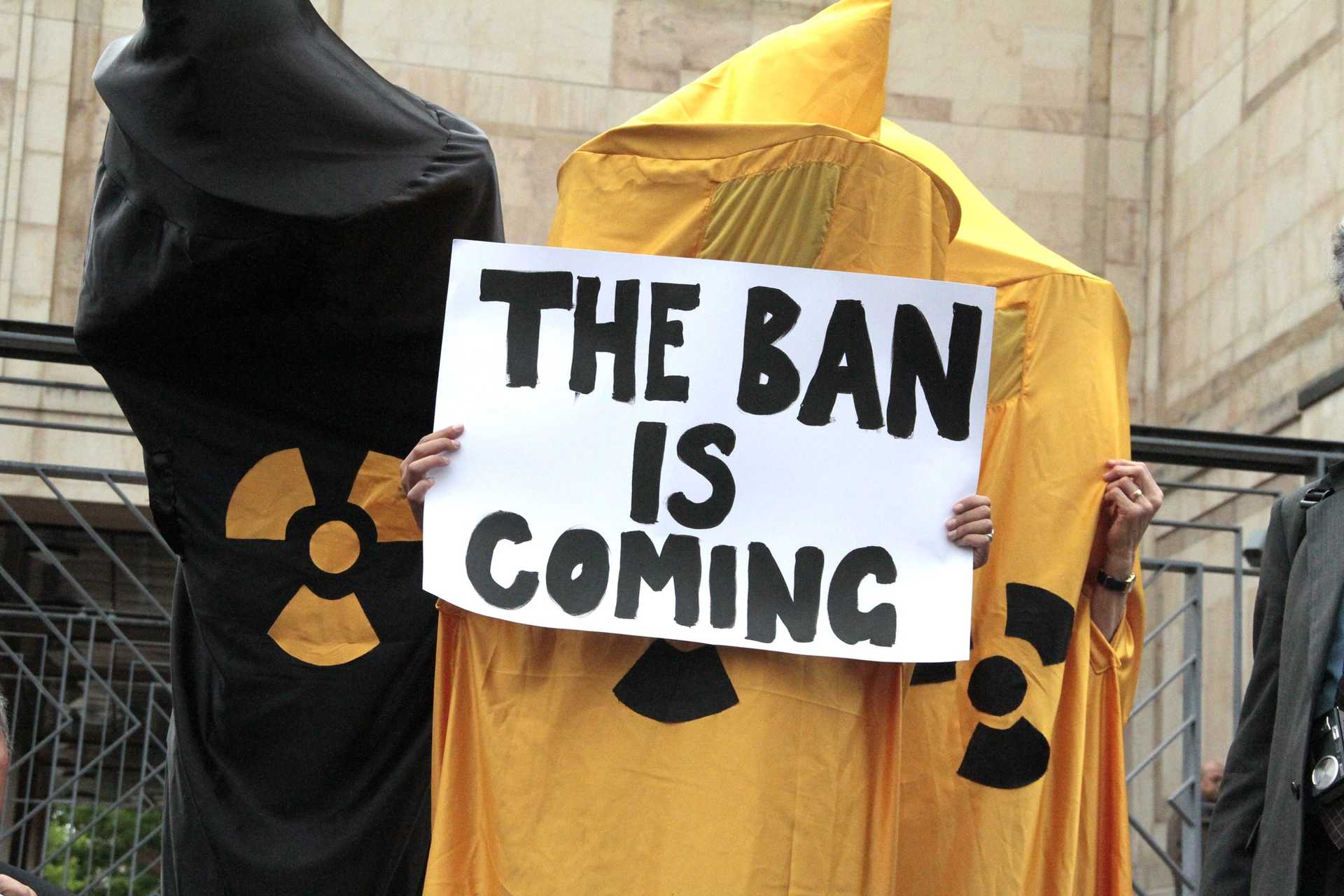
Civil Society and Disarmament Paper Series
The Office for Disarmament Affairs publishes the series entitled “Civil Society and Disarmament”.
The series is published within the context of the General Assembly resolutions on the United Nations Disarmament Information Programme and the United Nations Study on Disarmament and Non-Proliferation Education.
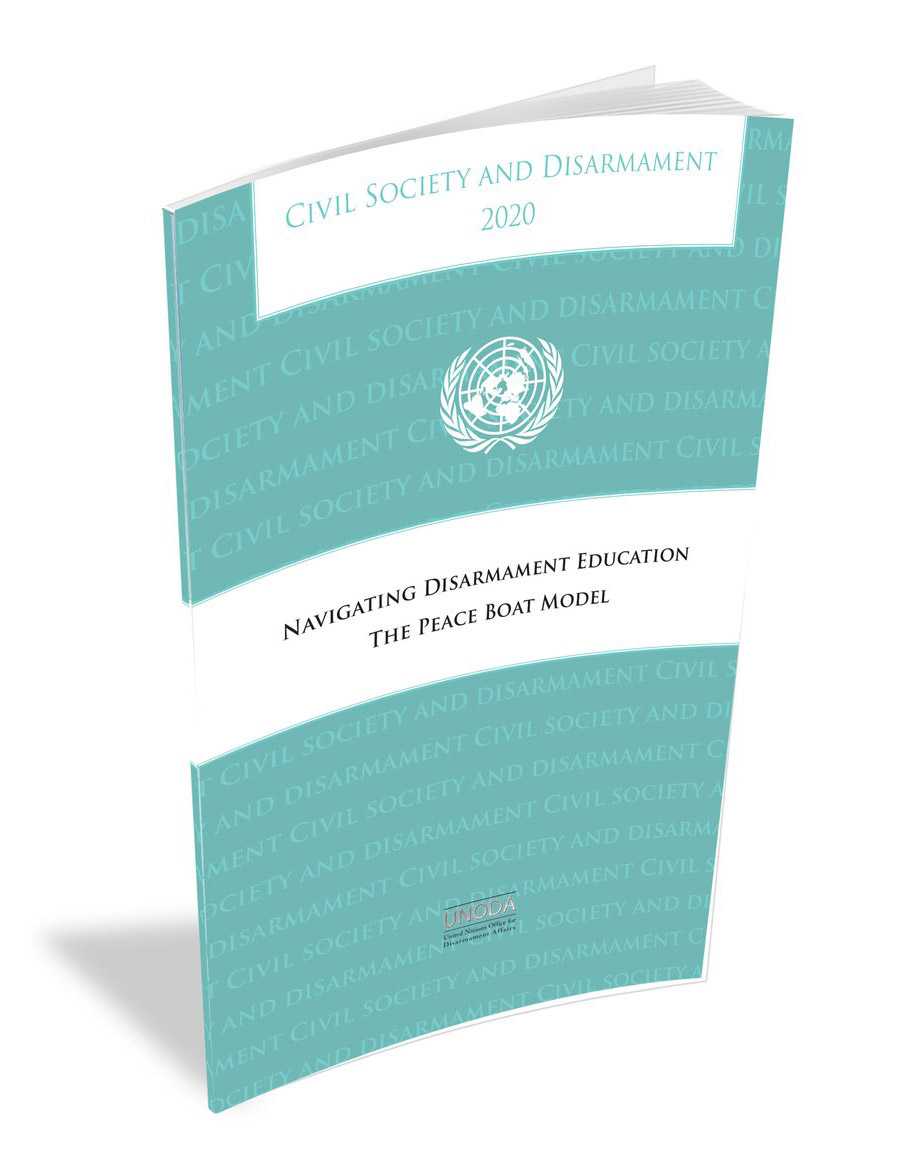
The publication provides a forum for the views of civil society in order to further an informed debate on topical issues of arms limitation, disarmament and security.
More information on civil society and disarmament is provided on the United Nations website.
The United Nations Disarmament Machinery: Some Criticism
The UN has historically been the laboratory and factory for the production of arms control and disarmament achievements, over the years.
However, the work of the machinery has been subjected to some considerable criticism, mainly due to the inability of its bodies to produce substantive progress for the past several years.
In the following pages you will find some of the main criticisms that have been moved to the machinery, as well as some of the main proposals to overcome them.
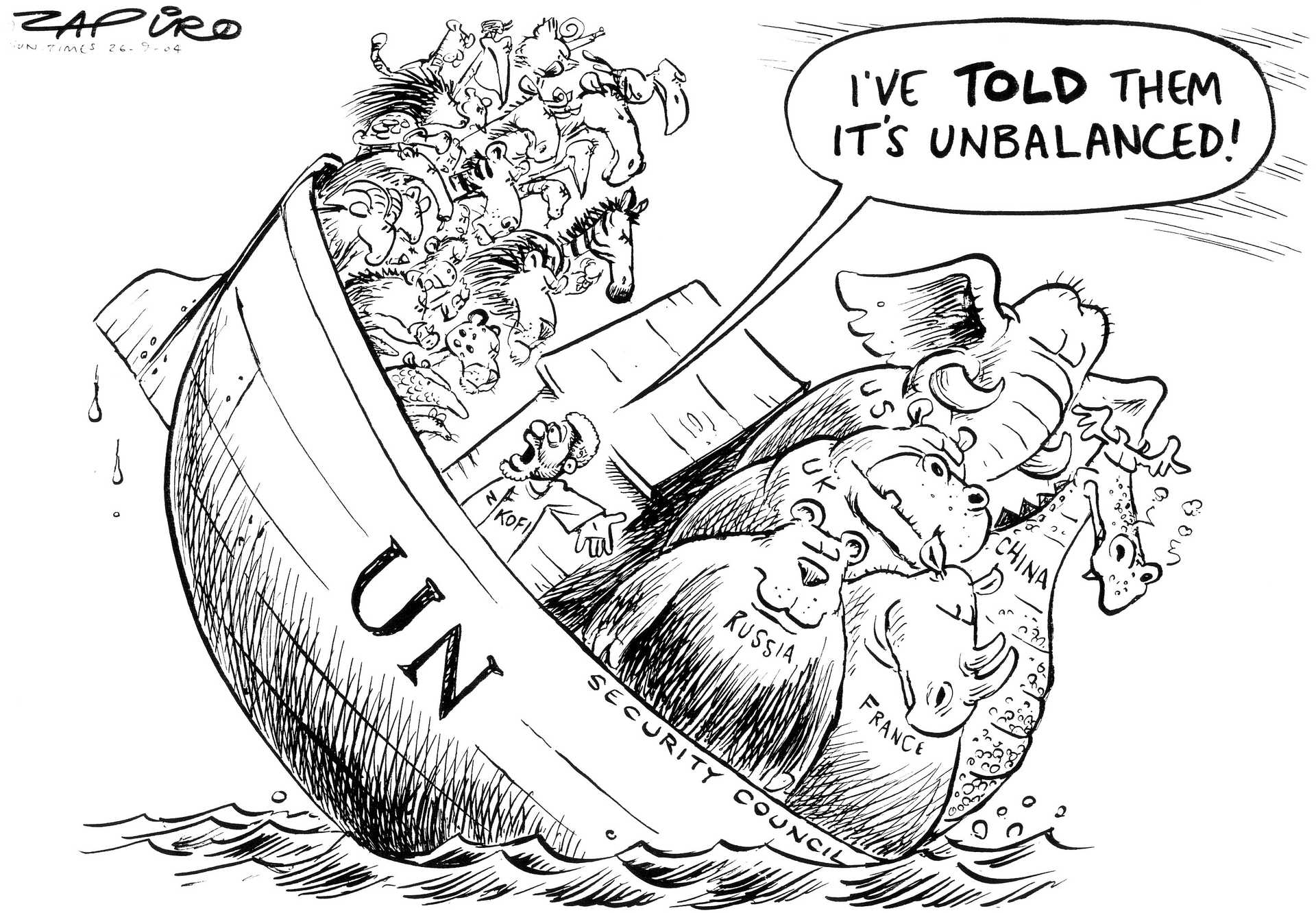
The United Nations Disarmament Machinery: Shortcomings
United Nation General Assembly First Committee
-
Many of the adopted resolutions reiterate same ideas and proposals without producing concrete actions nor behavioural change.
-
A large number of items in the agenda prevents focus on the real needs of the international community.
Jorge Morales Pedraza, The Reform of the United Nations Disarmament Machinery
Conference on Disarmament
-
Its consensus rule, originally designed to facilitate agreement among states, has instead provided a convenient cover for those who aim at blocking progress, leading to a stalemate.
-
Political and regional groupings have never changed and reflect Cold War era divisions (i.e. some NATO countries are still in the Eastern Group).
Patricia Lewis, Ramesh Thakur, Arms Control, Disarmament and the United Nations
United Nations Disarmament Commission
-
Its work has been affected by a lack of political will to deal with certain issues at the multilateral level.
-
Its reports to the UNGA often focus on the disagreements on disarmament issues rather than on ways to produce conceptual and substantive progress.
Sergio Duarte, How to Revitalize Disarmament Efforts
United Nations
-
Security Council Resolutions
-
United Nations sanction regimes resulted from the UN Security Council Resolutions at times have proved to be ineffective in curbing nuclear weapons programmes and ambitions.
John Hudson, David Francis, Why Did Sanctions Fail Against North Korea?
The United Nations Disarmament Machinery: Some Proposals for Change
Over the years, various parties have voiced their opinion and made proposals on how to develop the Disarmament Machinery.
Within the United Nation General Assembly First Committee
- attach concrete actions to resolutions
- set specific timetables and deadlines for concrete actions
- limit number of resolutions
- limit speaking time in general debate
- resolutions to become binding if approved by consensus or ¾ of voters (currently UNGA Resolutions are not binding)
Within the Conference on Disarmament
- reconsider the composition of regional and political groups
- reconsider consensus rule, at least for the adoption of the agenda
- consider enlargement of the membership
Within the Machinery
- encourage dialogue among main bodies
- convene a SSOD-IV to put a stronger emphasis on nuclear disarmament, reaffirming the SSOD-I’s mandate